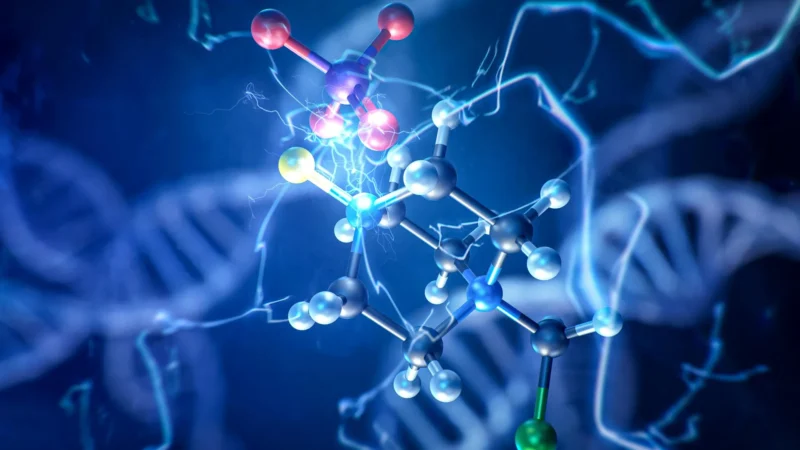Top Highlights
-
New Role for DNA: Researchers at NUS discovered that DNA, traditionally known for carrying genetic information, can also efficiently guide chemical reactions for drug development using its phosphate groups as catalysts.
-
Chiral Compounds Challenge: Many medicines are chiral, requiring precise production of one mirror-image form to avoid harmful effects, a challenge now addressed by the DNA-guided method, making drug manufacturing cleaner and more sustainable.
-
Guiding Mechanism Revealed: The team found that DNA phosphates attract positively charged molecules, aligning them for optimal reaction conditions—similar to magnets—which enhances selectivity in producing desired compounds.
-
Future Implications: This breakthrough encourages further exploration of DNA phosphates in developing next-generation pharmaceuticals, potentially transforming chemical manufacturing processes into more efficient and environmentally friendly practices.
DNA’s New Role in Medicine
Recent research from the National University of Singapore reveals an exciting potential for DNA beyond its traditional role. Researchers found that specific regions of DNA, particularly phosphates, can direct chemical reactions more efficiently than current methods. These phosphates behave like tiny “hands,” guiding molecules to produce only the desired mirror-image forms of pharmaceutical compounds. Many drugs are chiral, meaning they exist in two forms that can have vastly different effects on the body. Consequently, creating only the correct form is crucial in drug development. This DNA-guided approach could significantly simplify the process, leading to safer and more effective medicines.
Moreover, the NUS team demonstrated that DNA’s phosphates attract positively charged molecules, similar to magnets. This attraction holds the molecules in place, ensuring they react in predictable ways. The team’s innovative technique, “PS scanning,” allowed them to identify which phosphate sites were most effective in these reactions. Computer simulations further validated their findings. Such advancements not only promise to enhance drug manufacturing but also highlight DNA’s untapped potential as a guiding force in chemical processes.
Promoting Sustainability in Chemistry
The environmental implications of this research are equally promising. Asst. Prof Zhu emphasized that, with proper design, DNA phosphates could act as artificial enzymes, making chemical manufacturing more sustainable. Traditional drug production often involves harmful chemicals and extensive waste. However, using DNA as a catalyst could minimize environmental impact while increasing efficiency.
The implications for widespread adoption are significant. As researchers continue to explore DNA phosphates, the potential for creating complex pharmaceuticals becomes more achievable. This innovation could revolutionize the way we develop drugs, aligning with the growing demand for environmentally friendly practices. Ultimately, this discovery serves as a reminder of DNA’s hidden power, marking a substantial step forward in our journey toward better health solutions and sustainable practices.
Stay Ahead with the Latest Tech Trends
Stay informed on the revolutionary breakthroughs in Quantum Computing research.
Discover archived knowledge and digital history on the Internet Archive.
TechV1

